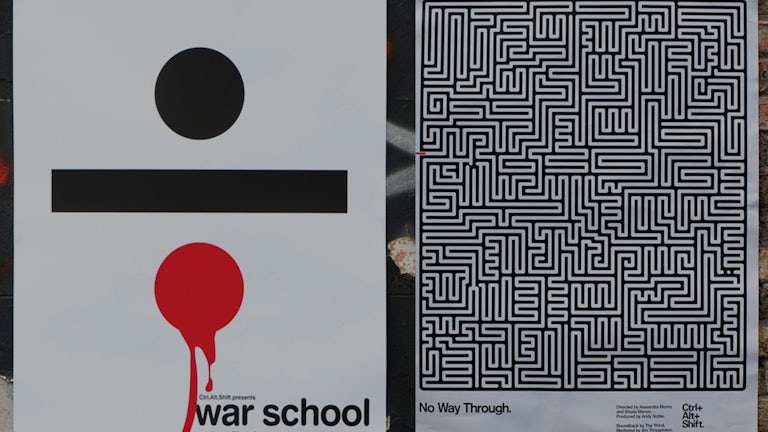Shopping Bag (0)
Your shopping bag is empty


A study from DDB U.S suggested that 74% of people prefer to donate locally, to non-profit charities, than to big, global causes, and 49% would shop for a brand that donated to local charities. Meanwhile, 51% would pay more for a brand they saw engaging with a social cause they supported. This mix of brand altruism is an interesting factor in how we’re engaging with charities – begging the question if high-street donations are the way forward? And should charities begin to think more like brands?
If you take a walk down the main shopping street of any major town in the UK, you will hear this familiar phrase: "Excuse me mate, can you spare a few minutes...?"
Before you switch to ignore and the rest becomes white noise as you recite tried and trusted get out excuses - "Sorry, I'm just on my way to..." or "I'm running late for..." - mantras that really mean "you're not having my cash and I don't care what it is for".
Then there’s the fact that younger people don’t often understand what charities they’re raising money for, even if they do go so far as to invest in the obligatory onesie for university sponsored RAG Week.
These are just two of the problems that all charities face in the modern climate where they are all competing for the same headspace in the youth market. People have neither the money nor time to be coerced when not on their own terms; they have become savvy to a blanket approach.
Amplify are experts in making the right connections with audiences, a method that charities need to adopt in order to have meaningful relationships and dialogue with the soundbite generation. They need to generate interesting dialogue and content for their audience, servicing the youth market's need to have continual entertainment, as well as encouraging and prompting much needed responses to their activity.
Back in 2009, Amplify curated a series of five films for Christian Aid, after they appointed ex-PlayStation marketer, Katrin Owusu to help create their sub-brand, Ctrl.Alt.Shift. The intention was not to ask for money, but to make people aware of issues that are relevant to their own lives. This pre-empted a developing trend to engage young people on their own terms, something marketers are keen to reiterate about the emerging Generation Z.
Ctrl.Alt.Shift recognised that they aren't competing with other charities for their audience's attention, but any brand that is targeting youth headspace. "We want them to wear Ctrl.Alt.Shift in the same way that they would wear their favourite brands, an iPod, the Nike swoosh - something that they feel says who they are. The fact that they are doing 'good' is almost incidental, they are becoming politicised via their engagement with Ctrl.Alt.Shift and taken on a journey that will lead them to a real understanding and engagement with the issues, and empower them to change their world" says Owusu.
Brand Aid
Our attitude to charity has changed. Historically the big charity organisations were the banks for good causes, providing the essential infrastructure to collect and distribute funds to help others, as well as build awareness and generate revenue through their shops, fetes and charity balls. Then in the mid-80s everything changed. Sir Bob, Midge and Bono rallied the youth icons from music, comedy and sport to raise the plight of Africa. They shook the suburban politeness of charity with the clear request to ‘give us your fokin’ money’ and focused the global marketing machine on issues rather than the charity organisations.
As mainstream charities increasingly promote the same global issues – poverty, climate change, AIDS, child welfare, third world debt, war/natural crisis – the organisations behind the causes becomes less distinct. Corporate mistrust and the global financial crisis provide further challenges for charitable organisations.
So, whilst older people and those with specific experiences of loss or illness may retain a relationship with a charitable organisation, young people are more likely to see them as outmoded tin-rattlers who represent the past rather than the future.
Even with the re-brands, creative marketing campaigns and a greater sense of delivery, charities have more to do if they are to build a sustainable relationship with youth. And as any brand manager can tell you, if you aren’t recruiting and keeping new, younger consumers your brand will eventually fail.
Although young people don’t have pots of cash, their life-time value is immense and their passion, drive and idealism can change the world. Engaging the hearts, minds and voices of millennials (and soon, Generation Z) seems to be a strategic necessity for charity organisations. Charities need to stand out and become sustainable brands for the future.
Arguably, Geldof broke the mould. In the ‘80s, he spoke to youth in their language but, more importantly, he led them on a journey rather than simply pandering to their wishes. He mobilised, entertained, bullied and shamelessly asked everyone to stand and deliver. Then he followed through. Sometimes he failed – but he learned, adapted and he stayed true to his ‘brand’.
With charity success stories there is a common theme; all the charities have looked at their audience and considered what makes their audience tick. With 100 other charities queuing to speak to your audience a few days, hours or minutes after you have had your shot, it is important to ensure the conversation is in a language that will be understood, in an environment that is comfortable and totally on their terms.